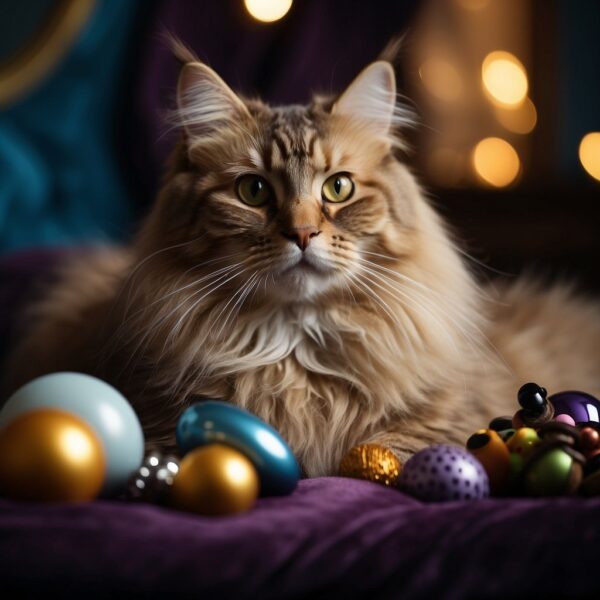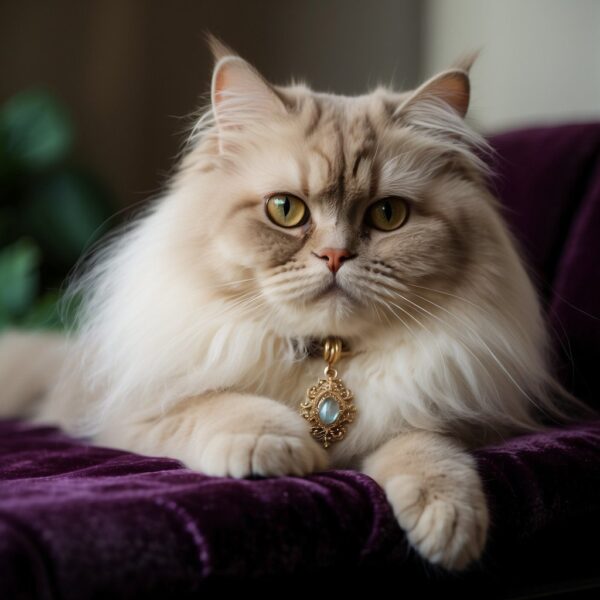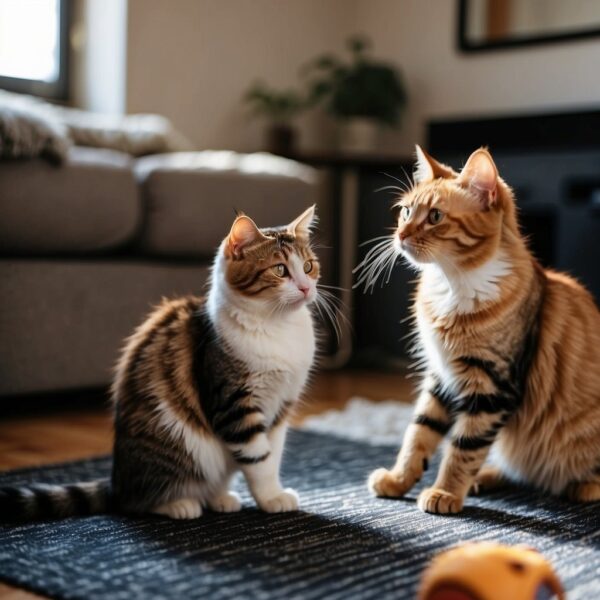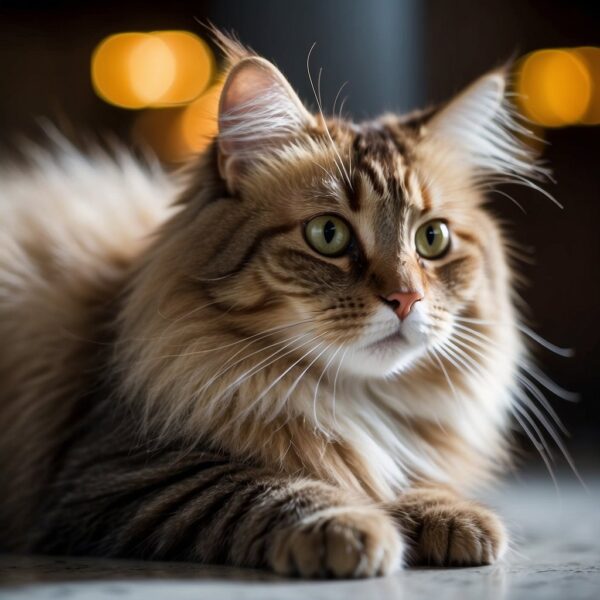
High Maintenance Cats: Special Care Needs
High maintenance cats are a unique category of felines that require more attentive care, commitment, and often greater financial resources from their owners. These cats typically demand a higher level of interactive engagement and may have specific health and grooming needs. The designation of a cat as “high maintenance” can stem from its breed characteristics, personality traits, or even medical conditions that necessitate more extensive care routines.
Understanding the nuances of caring for high maintenance cats is essential for potential cat parents. These felines might require special diets, more frequent veterinary visits, and daily grooming to prevent matting and other issues. In addition, their behavior may require additional time for play and mental stimulation to keep them happy and healthy. Recognizing the scope of responsibilities involved in their care before making the commitment can lead to a more harmonious relationship between these cats and their guardians.
Key Takeaways
- High maintenance cats need more dedicated care and interactive engagement.
- Their wellbeing often depends on specialized health and grooming routines.
- An informed choice is crucial for a rewarding experience with a high maintenance cat.

Understanding High Maintenance Cats
High maintenance cats often require more attention and care than their low-maintenance counterparts. Understanding their needs is crucial for ensuring a harmonious relationship between the cat and its owner.
Defining High Maintenance
High maintenance cats are typically characterized by their need for increased engagement, stimulation, and care. Unlike low-maintenance cats, they may require specific dietary provisions, regular grooming, and more frequent veterinary visits.
High Maintenance vs. Low-Maintenance Cats
The primary distinction between high and low-maintenance cats lies in their care requirements. Low-maintenance cats often adapt easily to various environments and are more self-sufficient. In contrast, high maintenance cats demand more time, energy, and resources. Here’s a brief comparison:
| Aspect | High Maintenance Cats | Low-Maintenance Cats |
|---|---|---|
| Attention | Frequent, consistent interaction. | Independent, less demanding. |
| Grooming | Regular, often daily. | Minimal, less frequent. |
| Dietary Needs | Specialized, could be more costly. | Standard, easily catered. |
| Veterinary Care | May require more visits. | Standard health check-ups. |
| Environmental Needs | More space, enrichment. | Flexible, adapt to less space. |
Personality Traits of High Maintenance Cats
Cats that are considered high maintenance often exhibit particular personality traits. They may show a pronounced desire for companionship and can become vocal when seeking attention. Their active nature might require more interactive playtime and mental stimulation to keep them from becoming bored or destructive.
Environment and Space Considerations
The environment plays a pivotal role in the well-being of high maintenance cats. They usually thrive in a space that provides plenty of room to explore and engage in activities. Important environmental considerations include:
- Safe Outdoor Access: A secure outdoor area or catio can benefit these cats greatly.
- Indoor Enrichment: Climbing trees, scratching posts, and interactive toys are essential.
- Quiet Retreats: Despite being sociable, access to quiet spots for rest is also necessary.
Common High Maintenance Cat Breeds
High maintenance cat breeds often require extra grooming, attention, and care due to their unique physical traits and temperaments. From long-haired beauties to energetic companions, understanding their needs is crucial for maintaining their health and happiness.
Persian
The Persian cat breed is synonymous with a luxurious long coat that demands daily grooming to prevent mats and tangles. Their facial structure can lead to tear staining and necessitates regular cleaning. Persians are known for their lower activity levels, which can impact their overall health if not monitored.
Maine Coon
Maine Coons are one of the largest domesticated cat breeds, known for their thick fur coats and tufted ears that require regular grooming. They engage in moderate to high levels of activity and have a sociable nature, making interactive play a crucial part of their care.
Sphynx
Unlike their furry counterparts, Sphynx cats lack a coat to absorb oils, requiring frequent bathing to maintain healthy skin. Their near-hairless body also makes them susceptible to temperature extremes, needing protection from both cold and excessive sun exposure.
Bengal
Bengals are highly active and intelligent, often requiring more mental stimulation and physical exercise than other breeds. Their short coat is low shedding but occasional grooming helps with the removal of excess hair and skin oils.
Himalayan
A cross between Persian and Siamese, Himalayans inherit the long, dense coat of the Persian, necessitating daily grooming. They share the brachycephalic facial structure of Persians, often resulting in similar maintenance for facial hygiene.
Siamese
Siamese cats are known for their vocal personalities and social nature. They possess short coats that are low maintenance in terms of grooming, but their active and social disposition means they require substantial interaction and playtime to stay content.

high maintenance cats Health and Grooming
Maintaining the health and grooming of high-maintenance cats requires diligent care, including regular vet visits, specific dietary management, routine grooming, and awareness of common health issues.
Routine Veterinary Care
High maintenance cats should visit a veterinarian regularly for preventive care. This includes vaccinations, routine check-ups, and dental care to prevent common diseases. Early detection of conditions like hypertrophic cardiomyopathy or polycystic kidney disease is critical for management and treatment.
Dietary Considerations
A cat’s diet must be carefully considered to prevent obesity and provide all the necessary nutrients for a healthy life. High maintenance cats might have specific dietary needs that require specialized food to manage health concerns.
- Protein: High-quality and easily digestible sources.
- Fats: Essential fatty acids for coat and skin health.
- Carbohydrates: Limited amounts, as cats are obligate carnivores.
- Vitamins and Minerals: Specially formulated to support cat health.
Grooming Requirements for high maintenance cats
Regular grooming is vital for high maintenance cats, not only for their coat’s health but also for mental stimulation. Grooming requirements often include:
- Brushing: Reduces matting and controls shedding.
- Nail Trimming: Prevents overgrowth and related issues.
- Ear Cleaning: Minimizes risk of infections.
- Bathing: For some breeds that may require it more frequently due to skin conditions.
Common Health Issues
Common health problems can include respiratory problems, eye issues, and breathing difficulties due to certain physical traits in some breeds. Recognizing signs early and discussing them with a vet can mitigate the impact of these issues.
Behavior and Interaction

High maintenance cats require dedicated care in terms of behavior and interaction, focusing on key areas such as exercise, socialization, and mental engagement to ensure their well-being.
Exercise and Playtime
Cats have varying energy levels, and it’s crucial to tailor daily playtime to meet their exercise needs. An indoor cat, for instance, often has fewer opportunities to climb and explore, making it imperative that their environment includes climbing structures and interactive toys. Playful activity not only entertains cats but also sustains a healthy diet regimen by burning calories.
- Daily Playtime: Schedule regular intervals, aiming for at least 15-30 minutes.
- Toys: Provide a variety of toys to keep them mentally stimulated.
Social Interaction and Companionship
Cats display a spectrum of social needs, from affectionate and vocal to more self-sufficient personalities. Understanding and respecting a cat’s individual preference for companionship is essential. They may form strong bonds with their owners and look for interaction after periods of separation.
- Affection: Allow the cat to initiate contact, reinforcing positive interactions.
- Companionship: Be present and attentive to your cat’s social cues and needs.
Training and Mental Stimulation
Mental stimulation is as important as physical exercise for a cat’s well-being. Training provides an excellent source of cognitive enrichment. Cats can learn a variety of commands and tricks, which can help address behaviors such as scratching inappropriate items or jumping on counters.
- Training Sessions: Incorporate short, consistent sessions to maintain their focus.
- Puzzle Feeders: Use these to challenge them mentally during feeding, promoting a healthy diet while also entertaining them.
Living with High Maintenance Cats
Living with high maintenance cats requires dedication to established routines and attentiveness to their emotional and physical needs. Understanding and managing these aspects can enhance the well-being of these feline companions.
The Importance of Routine
Cats thrive on predictability, and high maintenance cats especially benefit from a consistent daily routine. They often need regular feeding schedules, frequent clean litter box maintenance, and dedicated play times to stay healthy and content. It is crucial to set specific times for meals, grooming, and affection to create a sense of security and structure in their lives.
- Feeding: Consistent times for meals prevent overeating and digestive issues.
- Grooming: Regular grooming sessions help manage shedding and maintain their coat’s health.
- Play: Designated playtime addresses their physical activity needs and prevents boredom.
Attending to Emotional Needs
High maintenance cats may require more attention and interactive play to remain emotionally stable. They often show a need for an affectionate bond with their owners, which can be fostered through consistent engagement. Offering various toys and a scratching post can satisfy their instincts and keep them stimulated.
- Affection: Regular, gentle petting sessions can strengthen the emotional bond.
- Interactive Toys: Using toys that mimic prey can engage their natural hunting instincts.
Managing Environmental Factors
Cats are sensitive to their environment, and high maintenance cats might react more strongly to changes or inadequate surroundings. A comfortable bed, a quiet rest area, and access to a clean litter box are essential for their comfort and health. Regular cleaning of their living space prevents stress and potential health issues.
- Bedding: A dedicated, soft bed in a quiet area provides a safe retreat.
- Litter Box: At least one litter box per cat, placed in a private location and cleaned daily, is necessary to ensure hygiene.
By addressing the routine, emotional, and environmental needs of high maintenance cats, owners can foster a harmonious living situation that caters to the well-being of their cherished pets.
high maintenance cat Financial Considerations
When it comes to high-maintenance cats, owners should be prepared for the various expenses associated with their care. These costs often extend beyond basic needs and can impact the overall budget.
The Cost of Health Care
Health care for high-maintenance cats can be expensive, with regular vet visits constituting a significant portion of the budget. It’s pivotal for owners to anticipate the costs for:
- Routine check-ups
- Emergency services
- Chronic condition management
A breakdown of potential veterinary expenses might look like this:
Investing in High-Quality Nutrition and Toys
A proper diet is vital for a cat’s health, and high-maintenance cats might require specialized foods that are more costly than standard options. These diets are designed to prevent obesity and ensure overall physical health, which may entail:
- Prescription diets
- Organic or natural foods
- Specialized treats
Moreover, mentally stimulating and durable toys are essential for emotional well-being and can help avoid additional health issues. Owners should consider the longevity and safety of toys, preferring quality over quantity.
Pet Insurance
Pet insurance can be a sensible investment to mitigate healthcare costs over time. Policies vary in coverage, including:
- Accident-only plans
- Comprehensive coverage
It’s crucial for owners to research and choose a plan that aligns with their cat’s needs and their financial capability. Comparing different insurance providers will allow owners to understand the range of options available.
Choosing the Right Cat for You
When selecting a feline companion, one must consider their lifestyle, potential allergies, and the readiness for a long-term commitment. The right cat not only matches your daily routine but also is compatible with health concerns and can thrive in your care for years to come.
Assessing Your Lifestyle
One should evaluate their daily routine and environment to determine which cat personality will blend seamlessly with their life. While some cats require constant attention and social interaction, others are more independent and can endure longer periods alone. A busy individual might find a low-maintenance pet more suitable, whereas someone with ample free time might prefer a breed that craves regular engagement and play.
Allergies and Grooming
Prospective cat owners must consider both allergies and grooming requirements. Hypoallergenic breeds can be a better choice for individuals with sensitivities. Additionally, some cats have high grooming needs and demand daily brushing to maintain a healthy coat and reduce shedding. Regular grooming helps to ensure a cat’s overall health and hygiene but can be time-consuming.
Here’s a brief overview of cat breeds categorized by grooming needs:
- Low Grooming: British Shorthair, American Shorthair
- Moderate Grooming: Bengal, Siamese
- High Grooming: Persian, Maine Coon, Siberian
Long-Term Commitment
Cats can live for many years, often requiring care into their late teens or even twenties, thus one must be prepared for the longevity of this commitment. It is crucial to provide a healthy diet and regular veterinary check-ups to maintain their health over the years. Considering the lifespan and healthcare needs of different cat breeds is essential before bringing a pet home.

Frequently Asked Questions about high maintenance cats
In evaluating the care requirements of different cat breeds, potential owners often have a series of pressing inquiries. The following subsections aim to elucidate the particulars of feline breeds that vary in their demand for attention and maintenance.
Which breeds of cats require the most care and attention?
The Persian cat, with its long, luxurious coat, demands daily grooming to prevent mats and tangles. Similarly, Sphynx cats, while lacking hair, require regular skin cleaning to remove oil build-up. Both breeds exemplify high-maintenance grooming needs.
How do hypoallergenic cats compare in terms of maintenance needs?
Hypoallergenic cats like the Russian Blue or the Siberian can be lower maintenance in terms of grooming due to their coat qualities that reduce allergic reactions. Despite this, their overall care needs, such as attention and health monitoring, are consistent with non-hypoallergenic breeds.
What characteristics make a cat breed high maintenance?
Factors contributing to a high-maintenance breed include demanding grooming needs, such as long-haired coats or special skin care, as well as breeds with hereditary health issues requiring regular veterinary supervision. High-energy breeds may also need more interactive playtime and mental stimulation.
Can you suggest some cat breeds that are considered low maintenance?
The British Shorthair and American Shorthair are examples of cat breeds known for their low maintenance. They typically have short coats that do not require excessive grooming and are recognized for being independent and adaptable.
What are the common challenges of caring for more demanding cat breeds?
Owners of high-maintenance breeds often face challenges such as allocating time for daily grooming, increased financial costs for health care, and ensuring enough environmental enrichment to satisfy their cat’s needs, which may be more complex than those of less demanding breeds.
What should a potential cat owner consider when looking for a breed with lower care requirements?
Potential owners should look for cat breeds with short to medium coat lengths, generally robust health, and moderate energy levels. These traits often translate to decreased grooming needs, less frequent trips to the vet, and a balance between affection and independence that can be easier for busy individuals to manage.